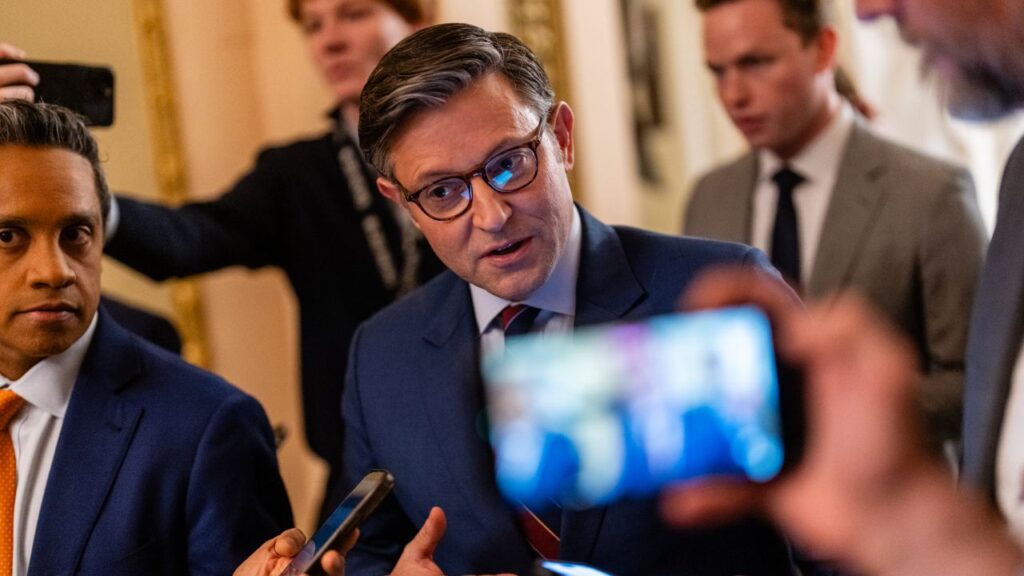Ukraine's military claims to have halted Russia's advance in a key northeastern town, while Moscow insists it will continue its offensive. (AP File)

- Ukrainian units have reportedly halted the Russian advance in the town of Vovchansk.
- The situation remains tense and complex, with both sides showing determination in the face of adversity.
- Ukraine's forces are waiting for delayed deliveries of crucial weapons from Western partners.
Share
|
Getting your Trinity Audio player ready...
|
KYIV, Ukraine — Ukrainian units locked in street battles with the Kremlin’s forces in a key northeastern Ukraine town have halted the Russian advance, military officials in Kyiv claimed Thursday, though a senior Moscow official said the frontline push had enough resources to keep going.
Russian attempts to establish a foothold in the town of Vovchansk, which is among the largest towns in Ukraine’s northeastern Kharkiv region with a prewar population of 17,000, “have been foiled,” Ukraine’s general staff said in a midday report.
It was not possible to independently verify the claim.
Six people were injured Thursday in one Russian daylight attack on Vovchansk using cluster munitions, local officials said, as emergency workers and volunteers were rescuing people affected by shelling. Among the injured were two medics.
Ukrainian authorities have evacuated some 8,000 civilians from the town. The Russian army’s usual tactic is to reduce towns and villages to ruins with aerial strikes before its units move in.
Vovchansk, located just 5 kilometers (3 miles) from the Russian border, has been a hotspot in the fighting in recent days. Russia launched an offensive in the Kharkiv area late last week, significantly adding to the pressure on Ukraine’s outnumbered and outgunned forces which are waiting for delayed deliveries of crucial weapons and ammunition from Western partners.
Related Story: On the Eve of His Visit to China, Putin Says Russia Is Prepared to Negotiate ...
Testing Defenses and Striking Behind Lines
Russia has also been testing defenses at other points along the roughly 1,000-kilometer (620-mile) front line snaking from north to south through eastern Ukraine. That line has barely changed over the past 18 months in what became a war of attrition. Recent Russian attacks have come in the eastern Donetsk region, as well as the Chernihiv and Sumy regions in the north and in the southern Zaporizhzhia region. The apparent aim is to stretch depleted Ukrainian resources and exploit weaknesses.
Ukraine has repeatedly tried to strike behind Russian lines, often using drones though Russia’s response to the new technology used in unmanned vehicles has improved in recent months.
Russian naval aircraft Thursday destroyed 11 Ukrainian sea drones heading towards annexed Crimea in the western Black Sea, Russia’s Defense Ministry said, according to state news agency TASS.
Kyiv made no comment.
Ukrainian President’s Visit to Kharkiv
Ukrainian President Volodymyr Zelenskyy met with his top military commanders in Kharkiv on Thursday and said the region “is generally under control.” However, he acknowledged on social media that the situation is “extremely difficult” and said Ukraine was again strengthening its units in Kharkiv. Zelenskyy also met with wounded soldiers and handed out medals.
“We clearly see how the occupier is trying to distract our forces and make our combat work less concentrated,” he said in his nightly video address Wednesday.
Former Russian defense minister and now the head of the presidential Security Council Sergei Shoigu insisted Russian troops are pushing the offensive in many directions and that “it’s going quite well.”
“I hope we will keep advancing. We have certain reserves for the purpose, in personnel, equipment and munitions,” he said in televised remarks.
The Institute for the Study of War, a Washington-based think tank, calculated that Russian forces attacking in Kharkiv have advanced no more than 8 kilometers (5 miles) from the shared border.
It reckons Moscow’s main aim in Kharkiv is to create a “buffer zone” that will prevent Ukrainian cross-border strikes on Russia’s neighboring Belgorod region.
Related Story: Blinken in Kyiv Says US Arms Will Make a Difference as Ukraine Reels from a New ...
US Support and NATO’s Call for More Arms
U.S. Secretary of State Antony Blinken, in a two-day visit to Kyiv this week, sought to reassure Ukraine of continuing American support. He announced a $2 billion arms deal, with most of the money coming from a package approved last month.
Ukrainian officials say their needs are urgent, and Western partners have vowed to expedite deliveries of military hardware.
NATO Military Committee Chair Rob Bauer on Thursday urged senior officers from the 32-nation alliance to send more arms and ammunition to Ukraine, even if that means ignoring weapons stock guidelines.
“If faced with a choice between meeting the NATO capability targets or supporting Ukraine, you should support Ukraine,” he told a meeting of top defense brass in Brussels. “Stocks can and will be replenished. Lives lost are lost forever.”
Denmark is donating an extra 5.6 billion kroner ($814 million) to Ukraine, Danish Foreign Minister Lars Løkke Rasmussen said Thursday, with half going to air defense systems.
Related Story: Trump Surrogates Make a Dangerous Call for China Regime Change: Fareed Zakaria
Russia’s Diplomatic Ties with China
Meanwhile, Russian President Vladimir Putin sought to consolidate ties with China with an official visit to Beijing.
China has backed Russia diplomatically over its invasion of Ukraine and is now an important export market for Russian oil and gas. Moscow also has turned to Beijing for high-tech products.



















